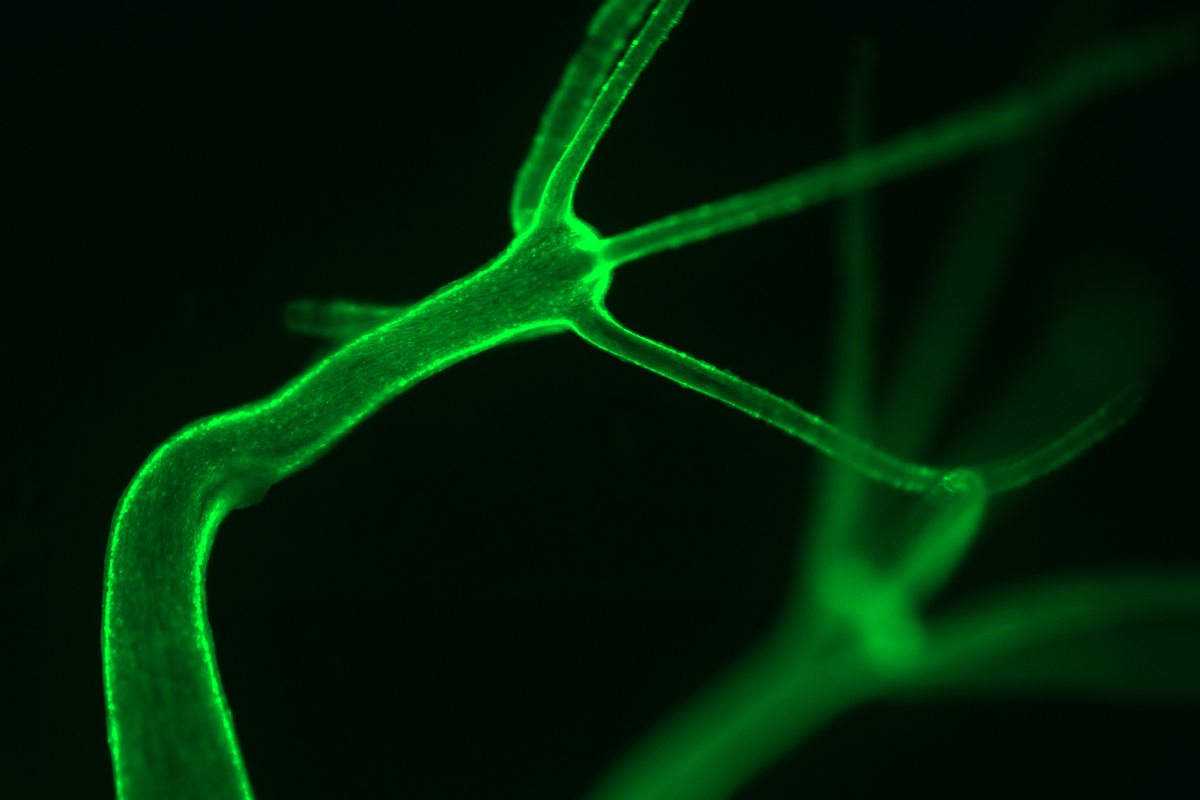Women have no genetic blueprint
Neither do men, but women *really* don't

I'm working on a story for Broadcast magazine right now about metaphors of the genome, especially the blueprint. This is something I've been chewing on at least since talking to Anaïs Bailles about her work on Hydra, freshwater polyps related to jellyfish that are famous for being basically immortal. If you shred up 50 of the little guys (they have no brains, relax) and pack the shreds into balls of a few hundred random cells, those hodgepodge cell balls will grow into doubly-mythological Hydra-Chimeras that are perfectly viable, if sometimes multi-headed.

If the genome is a blueprint, where is the Hydra-Chimera's blueprint? Any one of its cells could carry the genome of any one of the four dozen or so ill-fated progenitor Hydra. So where's the master plan for its body?
You might ask the same question about women. We're not chimeras, but we're something close: mosaics.

In mammals, typical females have a pair of X chromosomes and typical males have one X chromosome and one Y chromosome. The Y chromosome is kind of runty. It consists almost entirely of genes involved in making and maintaining males and very little else. You can easily get by without one (ask me how I know). The X chromosome, however, is not just about the making and maintenance of females. It contains nine times more genes than its little brother. Several of those genes are involved in the development of healthy bone, blood, nerves, and kidneys — things most men would agree are useful to have. No mammal can survive without an X chromosome.
This puts females in a bit of a pickle. One X chromosome is good and necessary. But having two copies of a gene means (roughly speaking) it'll be expressed — read off into protein — twice as much as usual. And double-dosing on proteins is not great for cells. It can be deadly or result in developmental disorders. People with an extra copy of chromosome 21 or extra copies of genes from that chromosome develop Down syndrome, for instance. So, early in embryonic development, female embryos silence one of their X chromosomes. One of the two X chromosomes gets crumpled up like a paper ball into a little nub of DNA called the Barr body. Rolled up in the Barr body, the extra X is inaccessible to the cellular machinery involved in gene expression.[1]
This process is called X-inactivation, and it was discovered by pioneering mouse geneticist Mary Lyon. She studied at Cambridge in 1943 when, despite wartime pressure on gender roles, women made up only about 10% of the student body — and those women weren't even awarded real degrees. Like astronomer Cecilia Payne-Gaposchkin, a trailblazing astrophysicist who discovered what stars are made of, Lyon graduated from Cambridge with only a "titular" degree, which was little more than a participation certificate and not considered a true academic qualification.
In a single-author paper in Nature in 1961, Lyon proposed that one X chromosome must randomly de-activate sometime early in mammalian development based on two observations: First, mice with just on X chromosome could survive perfectly well, suggesting that even if female cells have two X chromosomes, they don't use both. Second, mice with spots and stripes of multiple colors — phenotypes called tabby, tortoiseshell, calico, and brindle — were almost exclusively female. And those rare males that did sport a fancy spotted coat were always infertile.[2]

(Side note: I'd have preferred to include pictures of Lyon both early and late in her career, but while there are some great snapshots of Lyon from the 1950s out there, I don't have the rights for them. This obituary from the Royal Society shows her over the decades and gets into the details of her impressive life and work — she's definitely a scientist more people should know about!)
In placental mammals like us, X-inactivation is random: early in development, each cell tosses a biomolecular coin to decide whether mom's or dad's X chromosome gets crumpled up into a Barr body. And every time that cell divides, its daughter cells inherit that decision. Cells that use mom's X chromosome make more cells that use mom's X chromosome and vice-versa for cells that use dad's DNA instead. So the chromosomal coin-flips made in the early embryo ripple through development to produce entire patches and stripes of tissue using different set of chromosomes. All in the same animal.

In mice, several genes involved in coat color are located on the X chromosome. Lyon realized that the patchwork coats of her striped, spotted, and speckled female mice resulted from patchwork X-inactivation: a mouse with a brown father and a cream-colored mother could have some patches of skin expressing dad's "brown" X chromosome and others with mom's "cream" X chromosome. Tortoiseshell and calico cats are a more familiar example. Most cat lovers could tell you that torties are almost always female — that's because orange and brown or black coat color in cats involves genes on the X chromosome. The tortoiseshell daughters of an orange-furred dad and a black-furred mom are using dad's X in the orange patches and mom's X in the black ones. This is why all tortoiseshell and calico cats have at last two X chromosomes — rare male torties have XXY or other atypical karyotypes.
Human skin color isn't X-linked the way cat coat color is, so you can't see our stripes. But they're just as real. And where these stripes of chromosomal configuration will be is not predetermined by the genome. It is not encoded anywhere. It emerges through development and is fundamentally random. You can look at a cat's chromosomes and see that she's a calico, but not where her spots will be.
So, where is the female genetic blueprint? Where is the genetic master plan for a calico cat?

Let me know when you find it. I won't hold my breath waiting, though. Because the genome is not a blueprint; organisms are grown, not constructed. And that's true whether or not you have an X chromosome to spare.
Footnotes
[1]: The Barr body isn't entirely deactivated — certain genes on the silenced X chromosome can "escape" inactivation and contribute to development. In fact, it's important that they do! People with just one X and no Y chromosome have a disorder of sexual develpoment called Turner syndrome.
[2]: Almost always. Though exceedingly rare, fertile male mice can have the brindled coat pattern.
Thanks for reading
There are many ways you can help:
- Subscribe, if you haven't already!
- Share this post on Bluesky, Twitter/X, LinkedIn, Facebook, or wherever else you hang out online.
- Become a patron for the price of 1 cappuccino per month
- Drop a few bucks in my tip jar
- Send recommendations for research to feature in my monthly paper roundups to elise@reviewertoo.com with the subject line "Paper Roundup Recommendation"
- Tell me about your research for a Q&A post (email enquiries to elise@reviewertoo.com)
- Follow me on Bluesky
- Spread the word!






